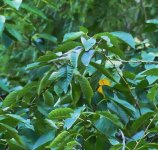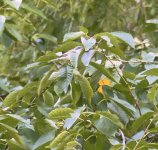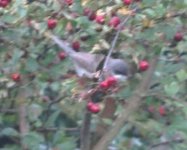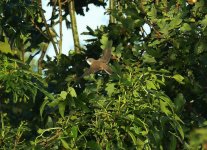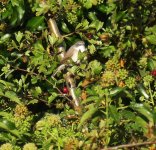While Nutcracker is right at looking for tonal value accuracy (and he is right in mentioning the seemengly bluish cast on some leaves), I will say the following:
Hoping to learn something from birders with experience with the Lesser WT-complex, I hope its possible to seperate three points:
1. Colour accuracy of the picture: if the pictures colour accuracy cant be believed, I assume its impossible to ID this bird to subspecies level.
2. Abnormal plumage, especially a pigmentation deficit has always to be considered. Please see a nice example for this (I was fooled by this too):
https://www.club300.de/gallery/idforum_topic.php?id=55765
3. If one assume that the colours of this bird are accurate, are there ssp in Asia that look like this bird?
I have only experience with ssp curruca and havent seen a bird with such a pale and grey-sandy back (this is the tone I see on my screen).
In search for my first Asian Lesser WT in Europe, especially after a post by the late Martin Garner suspecting them to be much more numerous in Europe (
https://birdingfrontiers.wordpress.com/2013/09/24/siberian-and-desert-lesser-whitethroats-2/) and interesting discussions in other forums, Im still very interested in learning more about the ID of asian Lesser WT.
So; I hope I learn something from this interesting picture and that this is not clouded by the (as said right) cautious approach regarding colour accuracy) and believe that impression in the field was that of an unusual coloured Lesser WT (is that right, KenM?)




